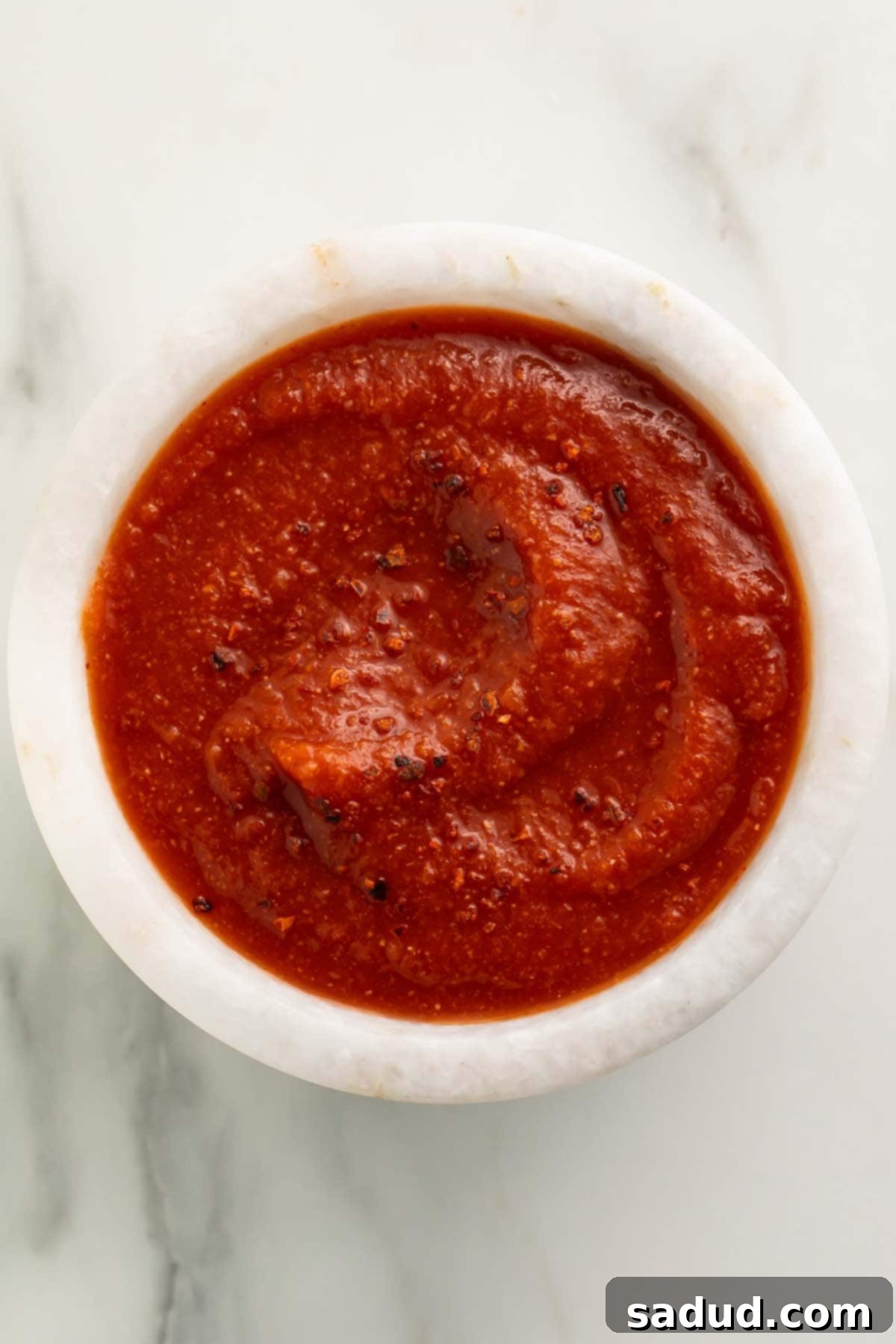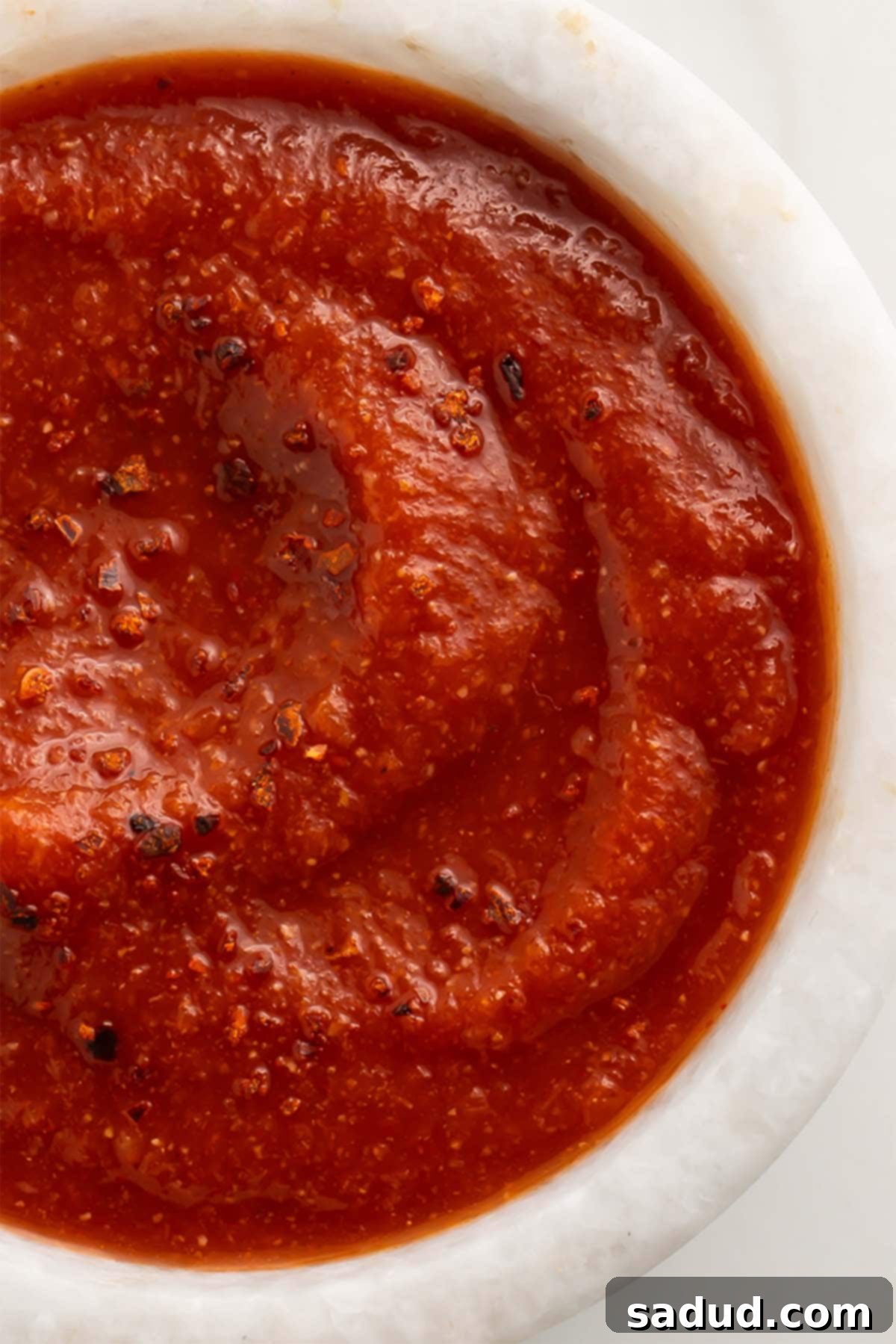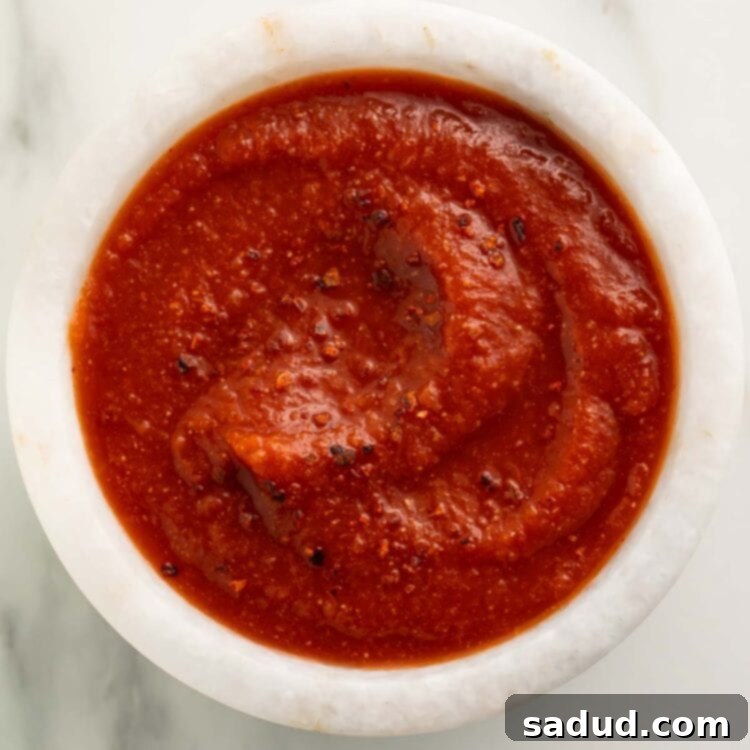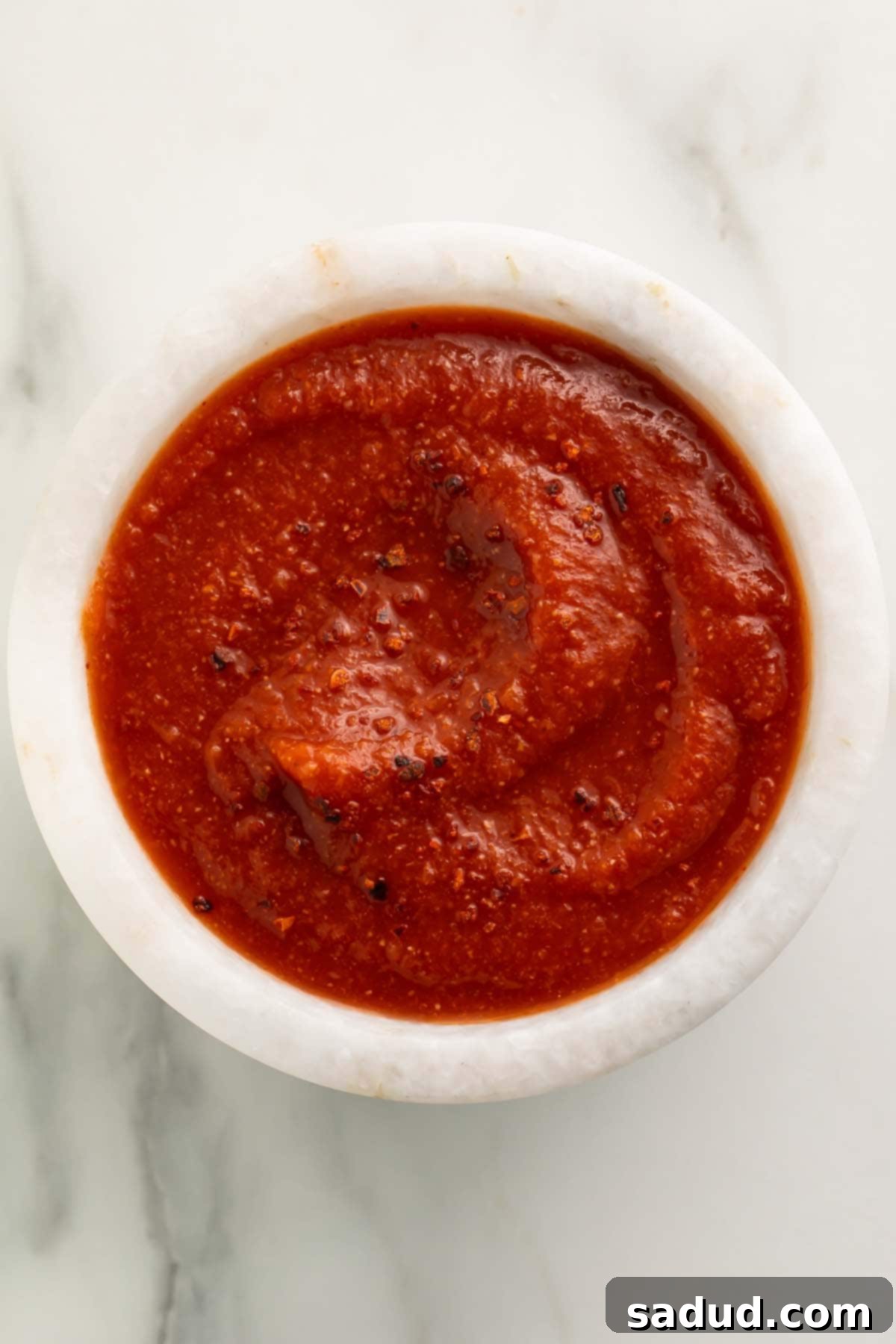Authentic Homemade Taco Sauce: Easy Recipe for Restaurant-Quality Flavor
Prepare to revolutionize your Taco Tuesday with this incredibly simple yet extraordinarily flavorful homemade taco sauce recipe. Forget about those bland, store-bought bottles; this from-scratch sauce delivers the vibrant, zesty taste you crave from your favorite Mexican restaurant, right in your own kitchen. It’s not just easy to make, using ingredients you likely already have on hand like tomato sauce and a handful of common spices, but it’s also wonderfully versatile. Perfect for drenching your tacos, enriching enchiladas, spicing up burritos, or adding a kick to salads, this recipe ensures you’ll never look back at commercial taco sauces again. Get ready to impress your taste buds and your guests with this fresh, customizable, and unbelievably delicious condiment!

Why You’ll Fall in Love with This Homemade Taco Sauce
There’s a distinct charm and undeniable advantage to making your taco sauce from scratch. Beyond the sheer satisfaction of crafting something delicious yourself, our easy recipe stands out for numerous reasons:
- Effortless Preparation with Pantry Staples: This super easy taco sauce comes together with just a couple cans of quality tomato sauce and a carefully selected blend of common spices. No need for exotic ingredients or complex cooking techniques. If you’ve got a saucepan and a spoon, you’re halfway to perfection. It’s the ideal recipe for busy weeknights when you still want to enjoy authentic flavor without the fuss.
- Incredible Versatility for Every Meal: This sauce is super versatile! Its balanced flavor profile makes it the ultimate condiment for a wide array of dishes. We adore it on traditional homemade tacos, as a tangy base for vibrant taco salads, a flavorful addition to frozen burritos for an instant upgrade, and even as a lively companion to scrambled eggs for a Mexican-inspired breakfast. Don’t limit yourself – it’s fantastic on nachos, quesadillas, rice bowls, or as a dipping sauce for chips and veggies.
- Batch Cooking for Lasting Enjoyment: The recipe makes enough sauce to last you a while, providing excellent value and convenience. Simply pour the cooled sauce into an airtight jar or container, and you’ll have zesty, spicy, and perfectly seasoned sauce ready to elevate all your Mexican food cravings throughout the week. This makes meal prep a breeze and ensures you always have incredible flavor at your fingertips.
- Economical & Superior Flavor: It’s way cheaper (and undeniably tastier) than the store-bought kind. Commercial taco sauces often contain preservatives, artificial colors, and excessive amounts of sodium or sugar, which can dull the natural flavors. By making it yourself, you control the quality of ingredients, customize the spice level, and achieve a fresh, vibrant taste that no store-bought option can match. Your wallet and your taste buds will thank you!
The Magic Behind the Ingredients
Each ingredient in this homemade taco sauce plays a crucial role in creating its balanced and complex flavor profile. Understanding these components will help you appreciate the recipe even more and empower you to make subtle adjustments to suit your personal preferences.
- Tomato Sauce: The foundation of our taco sauce. Canned tomato sauce provides a rich, smooth base with a natural sweetness and acidity. Opt for high-quality plain tomato sauce without added herbs or seasonings for the best control over the final flavor.
- Water: Used to thin out the tomato sauce to the perfect consistency, ensuring it’s pourable and coats your food beautifully without being too thick or watery.
- White Vinegar: A secret weapon for brightness! White vinegar adds a tangy zing that cuts through the richness of the tomatoes and spices, enhancing the overall flavor and providing that signature “restaurant-style” freshness.
- Cumin: The quintessential spice for Mexican cuisine. Cumin brings a warm, earthy, and slightly smoky flavor that is instantly recognizable and deeply satisfying. Adjust to taste for more or less intensity.
- Garlic Powder & Onion Powder: These two powdered aromatics provide a consistent, savory depth without the need for chopping fresh garlic or onions. They blend seamlessly into the sauce, offering a foundational layer of flavor.
- White Sugar: A small amount of sugar balances the acidity of the tomatoes and vinegar, bringing out the sweetness in the spices and creating a well-rounded taste. It’s not about making the sauce sweet, but about achieving harmony.
- Chili Powder & Paprika: Chili powder adds a mild, smoky heat and robust flavor, while paprika contributes a beautiful reddish hue and a gentle, sweet pepperiness. Together, they build a warm and inviting spice base.
- Salt: Essential for seasoning and enhancing all the other flavors. Start with the recommended amount and adjust to your liking.
- Cayenne Pepper: This is where you control the heat! Cayenne pepper provides a clean, fiery kick. Add more for a spicier sauce, or reduce it for a milder version.

Chef’s Essential Tips for the Perfect Taco Sauce
While this recipe is incredibly straightforward, a few expert tips can elevate your homemade taco sauce from great to absolutely exceptional.
- Customize the Heat: If you’re a fan of extra spicy taco sauce, don’t hesitate to add a little more cayenne pepper than suggested. Start with a quarter teaspoon and then gradually add more, tasting as you go, until you reach your desired level of fiery kick. For even more depth of heat, consider a pinch of crushed red pepper flakes or a dash of your favorite hot sauce.
- Sweetener Alternatives: If you’re managing sugar intake or simply prefer an alternative, you can easily swap out the white sugar for another granulated sweetener. Options like granular Swerve, monk fruit sweetener, or even a touch of coconut sugar work beautifully. Remember to adjust the quantity based on the sweetness intensity of your chosen sweetener, as some are much more potent than regular sugar.
- Achieve the Ideal Consistency: The simmering time is key to achieving that perfect restaurant-style consistency. If your sauce is too thin after 20 minutes, continue to simmer it uncovered for a few more minutes, stirring frequently, until it thickens to your liking. If it becomes too thick, you can always add a tablespoon or two of water to reach the desired texture.
- Let Flavors Mingle: While delicious immediately, homemade taco sauce often tastes even better after the flavors have had a chance to meld. Allow the sauce to cool completely before storing it in the refrigerator overnight. This allows the spices to fully bloom and integrate, resulting in a more profound and harmonious flavor.
- Batch and Store Smart: This recipe makes a generous amount, which is perfect for meal prepping. Store any leftover sauce in an airtight container in the refrigerator for up to 1-2 weeks. For longer storage, you can freeze it in small portions (ice cube trays work great!) for up to 3 months. Thaw in the refrigerator overnight before use.
- Experiment with Spice Blends: While our spice blend is a winner, feel free to experiment. A pinch of smoked paprika can add a wonderful smoky depth, or a touch of dried oregano can enhance the traditional Mexican flavor profile.
More Delicious Mexican Recipes to Explore
Once you’ve mastered this amazing homemade taco sauce, you’ll be eager to dive into more flavorful Mexican-inspired dishes. Here are some fantastic recipes from our kitchen and our sister sites that pair wonderfully with your new favorite sauce, or simply offer more vibrant tastes to enjoy!
- Cucumber Salsa: A refreshing and crisp alternative to traditional salsa, perfect for cooling down a spicy meal.
- Crockpot Queso Dip: Indulge in a creamy, cheesy dip that’s incredibly easy to make in your slow cooker.
- Mexican Stuffed Peppers: A wholesome and satisfying meal packed with Mexican flavors, often a perfect canvas for our homemade taco sauce.
- 8 Can Taco Soup: A super quick and easy soup recipe that’s hearty, flavorful, and incredibly comforting.
- Healthy Mexican Chicken Meal Prep: Prepare delicious and nutritious Mexican chicken ahead of time for healthy meals throughout the week.
- Smoky Chipotle Mayo: A creamy, smoky condiment that adds an extra layer of flavor to sandwiches, burgers, and even as a dip.
Frequently Asked Questions About Homemade Taco Sauce
We’ve gathered some common questions about making and using homemade taco sauce to ensure you have all the information you need for success.
Q: What is the difference between taco sauce and salsa?
A: While both are popular Mexican condiments, taco sauce and salsa have distinct characteristics. Taco sauce is typically smoother, with a thinner consistency, and often has a cooked tomato base. It’s usually milder and relies on a blend of powdered spices for flavor. Salsa, on the other hand, is generally chunkier, featuring fresh or roasted tomatoes, onions, cilantro, and chiles, and often has a fresher, brighter flavor profile. This homemade taco sauce aims for that smooth, zesty, and savory profile perfect for drizzling.
Q: Can I use fresh tomatoes instead of canned tomato sauce?
A: Yes, you can! Using fresh tomatoes will result in a slightly different flavor and texture, often fresher and less uniform. You would need to simmer and reduce fresh tomatoes significantly to achieve the concentrated flavor and texture of canned tomato sauce. For a smoother sauce, you might also need to blend them after cooking. For ease and consistent results, especially for a quick weeknight recipe, canned tomato sauce is highly recommended as per this recipe.
Q: How long does homemade taco sauce last in the refrigerator?
A: When stored in an airtight container, your homemade taco sauce will last wonderfully in the refrigerator for up to 1 to 2 weeks. The vinegar acts as a natural preservative, helping to maintain its freshness. Always ensure it’s fully cooled before storing to prevent condensation buildup.
Q: Can I freeze this taco sauce?
A: Absolutely! This homemade taco sauce freezes exceptionally well. Pour it into freezer-safe containers, zip-top bags (laid flat), or even ice cube trays for smaller, individual portions. It can be frozen for up to 3 months. To use, thaw overnight in the refrigerator and then gently reheat on the stovetop or in the microwave, stirring occasionally until warmed through.
Q: Is this recipe naturally gluten-free and vegan?
A: Yes, this homemade taco sauce recipe is naturally gluten-free and vegan, making it suitable for a wide range of dietary needs. All the ingredients listed – tomato sauce, water, vinegar, and spices – are plant-based and free from gluten. It’s a fantastic condiment to enhance any meal, regardless of dietary restrictions.
Q: What are some creative ways to use this taco sauce?
A: Beyond the classic tacos, burritos, and enchiladas, this sauce is incredibly versatile! Try drizzling it over scrambled eggs or breakfast burritos, stirring it into chili or taco soup for an extra flavor boost, using it as a base for a quick Mexican pizza, mixing it into ground meat for taco filling, or even as a flavorful dressing for grain bowls. It’s also fantastic as a dipping sauce for chicken tenders or quesadilla wedges.
If you loved this recipe as much as we did, don’t forget to leave us a review below. Your feedback helps us grow and inspires others to try delicious homemade cooking! ★ Follow Easy Healthy Recipes on Pinterest, Facebook, and Instagram, too, for more inspiring recipes and tips!
For more delicious recipes, visit our sister sites, 40 Aprons and Easy Cheap Recipes, where you’ll find a wealth of culinary inspiration!

Homemade Taco Sauce
 Cheryl Malik
Cheryl Malik
Print
SaveSaved!
Ingredients
- 2 8-ounce cans tomato sauce
- ⅔ cup water
- 2 tablespoons white vinegar
- 1 tablespoon cumin more or less to taste
- 2 teaspoons garlic powder more or less to taste
- 2 teaspoons onion powder more or less to taste
- 1 teaspoon white sugar more or less to taste
- ½ teaspoon chili powder more or less to taste
- ½ teaspoon paprika more or less to taste
- ½ teaspoon salt more or less to taste
- ¼ teaspoon cayenne pepper more or less to taste
Equipment
-
Saucepan (medium-sized)
-
Large Wooden Spoon or Whisk
-
Airtight Storage Container or Jar
Instructions
-
Begin by placing a medium-sized saucepan on your stovetop over medium heat. Allow the pan to warm up for a minute or two.
-
Once the pan is warm, carefully add all the ingredients to the saucepan: 2 (8-ounce) cans of tomato sauce, ⅔ cup water, 2 tablespoons white vinegar, 1 tablespoon cumin, 2 teaspoons garlic powder, 2 teaspoons onion powder, 1 teaspoon white sugar, ½ teaspoon chili powder, ½ teaspoon paprika, ½ teaspoon salt, and ¼ teaspoon cayenne pepper.
-
Stir all the ingredients together thoroughly using a large wooden spoon or whisk until they are fully combined and the sauce is smooth. Then, increase the heat to medium-high and bring the mixture to a gentle boil.
-
As soon as the mixture begins to boil, reduce the heat under the saucepan to low. Allow the sauce to simmer for 20 minutes, or until it has thickened to your desired consistency. Stir occasionally to prevent sticking and ensure even cooking.
-
Once the sauce has reached your preferred thickness, remove the saucepan from the heat and set it aside to cool completely. Transfer the cooled sauce to a serving bowl or an airtight storage container and serve as desired. Enjoy the fresh, homemade flavor!
Notes
- Make it Sugar-Free: For a sugar-free version, simply replace the white sugar with your preferred granulated sugar alternative such as Granular Swerve, monk fruit sweetener, or erythritol. Adjust the amount as needed based on the specific sweetener you choose and its sweetness intensity.
- Adjusting Spice Levels: If you prefer a milder sauce, reduce the amount of cayenne pepper or omit it entirely. For extra heat, feel free to add more cayenne pepper or a pinch of red pepper flakes.
- Storage Instructions: Store any leftover taco sauce in an airtight container in the refrigerator for up to 1-2 weeks. This sauce also freezes well; portion into freezer-safe containers and store for up to 3 months.
Nutrition Information
Number of total servings shown is approximate. Actual number of servings will depend on your preferred portion sizes.
Nutritional values shown are general guidelines and reflect information for 1 serving using the ingredients listed, not including any optional ingredients. Actual macros may vary slightly depending on specific brands and types of ingredients used.
To determine the weight of one serving, prepare the recipe as instructed. Weigh the finished recipe, then divide the weight of the finished recipe (not including the weight of the container the food is in) by the desired number of servings. Result will be the weight of one serving.
